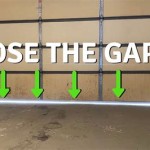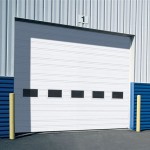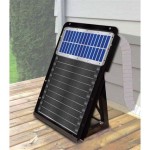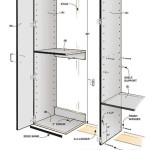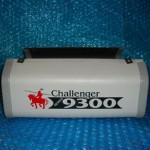Car Storage Lifts: Maximizing Space in Your Home Garage
For homeowners with limited garage space and multiple vehicles, car storage lifts offer a pragmatic solution for optimizing parking and storage capabilities. These lifts, also referred to as parking lifts or stackers, effectively double the useable area of a single parking bay, allowing for the vertical storage of cars, trucks, SUVs, and even other equipment. This article provides a comprehensive overview of car storage lifts for home garages, examining their types, benefits, considerations, and selection criteria.
The principle behind car storage lifts is relatively straightforward. A platform, powered by hydraulic or electromechanical systems, is raised vertically, lifting the vehicle resting upon it. This creates an open space beneath the raised vehicle, allowing another car to be parked in the original parking space. This stacking configuration significantly increases parking density within a confined area, addressing common challenges faced by car enthusiasts, collectors, and multi-car households.
Car storage lifts are not a one-size-fits-all solution. Various types cater to specific needs, garage dimensions, and budget constraints. Understanding the different lift types is crucial for making an informed decision.
Types of Car Storage Lifts
The market provides several distinct types of car storage lifts, each designed with specific configurations, lifting mechanisms, and intended uses. The following outlines the most common types available for home garage applications.
Two-Post Lifts: Two-post lifts are a widely recognized and popular option characterized by two vertical columns positioned on either side of the vehicle. The vehicle is lifted by arms that extend from the posts and engage with lifting points on the vehicle's frame. While offering unobstructed access beneath the car for maintenance and repairs, two-post lifts require careful positioning of the vehicle on the lift arms and are typically recommended for experienced users. They generally require a significant overhead clearance and reinforced concrete flooring to support the weight of the lift and vehicle.
Four-Post Lifts: Four-post lifts feature four vertical columns that support runways. The vehicle is driven onto the runways, and the entire assembly is then lifted. Four-post lifts are generally considered safer and easier to use than two-post lifts, as they provide a more stable platform for parking and require less precise vehicle positioning. They are well-suited for long-term storage applications and can also be used for basic maintenance tasks. Like two-post lifts, four-post lifts also demand adequate headroom and a strong, flat concrete slab.
Scissor Lifts: Scissor lifts utilize a series of interconnected, pivoting arms that extend vertically to raise the vehicle. They are often characterized by a low-profile design when lowered, making them suitable for garages with limited headroom. Scissor lifts can be surface-mounted or recessed into the floor, offering flexibility in installation. While they provide good access to the vehicle's undercarriage, scissor lifts may not be as stable or offer the same lifting capacity as two-post or four-post lifts. They are frequently employed for quick service tasks or short-term storage.
Single-Post Lifts: Single-post lifts are characterized by a single, central column that supports a lifting platform. They offer excellent access to all sides of the vehicle and require minimal floor space. However, single-post lifts may have lower lifting capacities and stability compared to other types. They are typically used for specific applications, such as wheel alignment or detailing, rather than long-term storage.
Tilt Lifts: Tilt lifts, also known as parking stackers, are designed to lift and slightly tilt one vehicle to create space for another vehicle to be parked underneath. They are often used in tandem parking configurations or when available height is particularly restricted. Tilt lifts generally have lower lifting capacities and are designed specifically for parking applications rather than maintenance tasks.
The selection of the appropriate lift type depends heavily on the specific requirements of the user, the dimensions of the garage, the type of vehicles to be stored, and the budget allocated for the project.
Key Benefits of Installing Car Storage Lifts
Installing a car storage lift in a home garage can unlock several advantages, addressing common parking and storage challenges. These benefits extend beyond simply increasing parking capacity and contribute to a more organized and functional garage space.
Maximizing Space Utilization: The most obvious benefit of a car storage lift is the doubling of parking capacity within the existing garage footprint. This is particularly valuable for homeowners with limited driveway space or those living in areas with strict parking regulations. By utilizing vertical space, car storage lifts eliminate the need for costly garage expansions or off-site storage solutions.
Enhanced Vehicle Security and Protection: Storing vehicles on a lift can offer enhanced security and protection compared to parking them outdoors or in a shared parking space. Lifts protect vehicles from the elements, such as sun, rain, and snow, which can cause damage to paint, interiors, and mechanical components. Furthermore, lifts can deter theft and vandalism, providing peace of mind for vehicle owners.
Increased Organization and Functionality: Beyond vehicle storage, car storage lifts can free up valuable floor space for other uses, such as a workshop, hobby area, or storage for tools and equipment. A neatly organized garage improves access to tools and equipment, enhancing the overall functionality of the space. The ability to lift a vehicle also facilitates maintenance and repair tasks, providing easier access to the undercarriage and other components.
Potential Increase in Property Value: In some cases, installing a car storage lift can increase the value of a property, particularly in areas where parking is at a premium. The added convenience and functionality of a multi-car garage can be a significant selling point for potential buyers, making it a worthwhile investment for homeowners planning to sell their property in the future.
Simplified Vehicle Maintenance: Raising a vehicle on a lift allows for more comfortable and ergonomic access to the undercarriage, wheel wells, and other areas that are difficult to reach at ground level. This simplification can make routine maintenance tasks like oil changes, brake inspections, and tire rotations much easier and safer to perform.
Important Considerations Before Installation
While car storage lifts offer numerous benefits, it's crucial to carefully consider several factors before proceeding with the purchase and installation. These considerations relate to garage dimensions, structural integrity, safety features, and local regulations.
Garage Dimensions and Ceiling Height: The available headroom within the garage is a critical factor in determining the appropriate type of car storage lift. Measuring the distance from the floor to the lowest obstruction, such as a ceiling beam or light fixture, is essential. Ensure that the chosen lift provides sufficient clearance for both the vehicles to be stored and any overhead garage door mechanisms. The width and depth of the garage also need to be considered to ensure adequate maneuvering space around the lift.
Floor Load Capacity and Concrete Slab Thickness: The concrete slab of the garage must be able to support the combined weight of the lift, the vehicles, and any additional load. Consult with a structural engineer to determine the floor load capacity of the existing concrete slab. In most cases, a minimum concrete thickness of 4 inches is required, but thicker slabs may be necessary for heavier vehicles or larger lifts. If the existing slab is insufficient, reinforcement or replacement may be required, adding to the overall cost of the project.
Electrical Requirements: Car storage lifts typically require a dedicated electrical circuit for operation. Determine the voltage and amperage requirements of the lift motor and ensure that the garage electrical system can accommodate the additional load. If necessary, consult with a qualified electrician to install a new circuit or upgrade the existing electrical panel.
Safety Features and Certification: Safety should be the paramount concern when selecting a car storage lift. Look for lifts that are certified by reputable organizations such as the Automotive Lift Institute (ALI) or other recognized safety standards. Key safety features include automatic safety locks, overload protection, emergency stop buttons, and durable construction. Regular maintenance and inspections are also essential to ensure the safe operation of the lift.
Local Building Codes and Permits: Before installing a car storage lift, it's crucial to check with the local building department to determine if any permits are required. Building codes may regulate the type of lifts allowed, the installation procedures, and the safety requirements. Failure to comply with local regulations can result in fines or the removal of the lift. Obtain any necessary permits before beginning the installation process.
Professional Installation vs. DIY: While some car storage lifts can be installed by experienced DIYers, professional installation is generally recommended. Qualified installers have the expertise and equipment to ensure that the lift is properly installed and meets all safety requirements. Professional installation also provides peace of mind and can help to avoid costly mistakes or accidents.
Maintenance Requirements: Car storage lifts require regular maintenance to ensure safe and reliable operation. This may include lubricating moving parts, checking hydraulic fluid levels, inspecting cables and chains, and verifying the functionality of safety features. Follow the manufacturer's recommendations for maintenance schedules and procedures. Consider establishing a maintenance contract with a qualified service provider.
By carefully evaluating these considerations, homeowners can make an informed decision about whether a car storage lift is the right solution for their needs and ensure a safe and successful installation.

Autostacker Modern Low Profile Parking Lift By Bendpak

Single Post Car Storage Lift Automotive Machine Advisors

Home Garage 3 Level Hydraulic Car Storage Lifts Elevator Parking System Made In Com

Parking Lifts Car Storage Elevators Bendpak

Backyard Buddy Classic B 4p7cl 7 000lbs 4 Post Lift For 9 Garage Advantage Lifts

Bendpak Hd 973p Tri Level Parking Lift

Vasari Car Lifts Dual Underground Options Mckinley Elevator

M 1 Single Post Car Lift Made In Usa American Custom Lifts

Why A 4 Post Car Lift Beats Expanding Your Garage

Hd 9st Four Post Lift Narrow 4 082 Kg Capacity Bendpak


